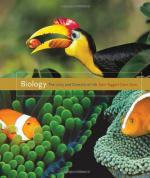|
This section contains 222 words (approx. 1 page at 300 words per page) |
Plants are photosynthetic multicellular eukaryotes, well-separated evolutionarily from photosynthetic prokaryotes such as the cyanobacteria. Three lineages of photosynthetic eukaryotes are recognized: 1) green plants and green algae, with chlorophylls a and b and with carotenoids, including beta-carotene, as accessory pigments ; 2) red algae, having chlorophylls a and d, with phycobilins as accessory pigments; and 3) brown algae, golden algae, and diatoms, with chlorophylls a and c and accessory pigments that include fucoxanthin.
Plants are differentiated from algae based on their exclusive multicellularity and their adaption to life on land. However, these two groups are so closely related that defining their differences is often harder than identifying their similarities. Fungi, often considered to be plantlike and historically classified with plants, are not close relatives of plants; rather, they appear to be closely related to animals, based on numerous molecular and biochemical features. Fossil evidence indicates that plants first invaded the land approximately 450 million years ago. The major groups of living land plants are liverworts, hornworts, and mosses (collectively termed bryophytes); lycophytes, ferns, and horsetails (collectively pteridophytes); and five lineages of seed plants: cycads, Ginkgo, gnetophytes, conifers (gymnosperms), and flowering plants (angiosperms).
See Also
Algae; Anatomy of Plants; Angiosperms; Bryophytes; Endosymbiosis; Fungi; Gymnosperms; Pigments.
Bibliography
Raven, Peter H., Ray F. Evert, and Susan E. Eichhorn. Biology of Plants, 6th ed. New York: W. H. Freeman and Company, 1999.
|
This section contains 222 words (approx. 1 page at 300 words per page) |


